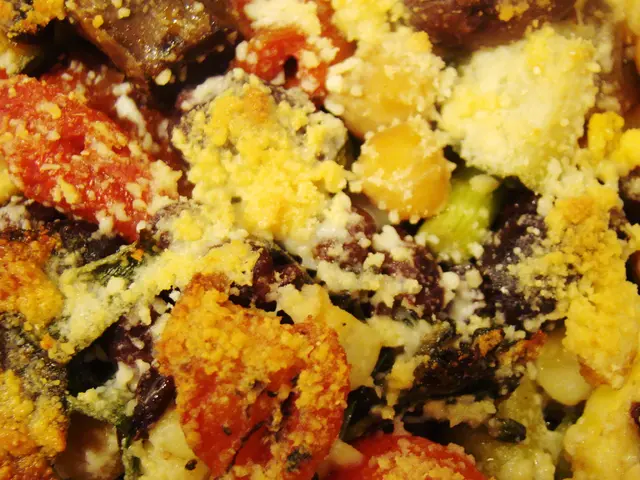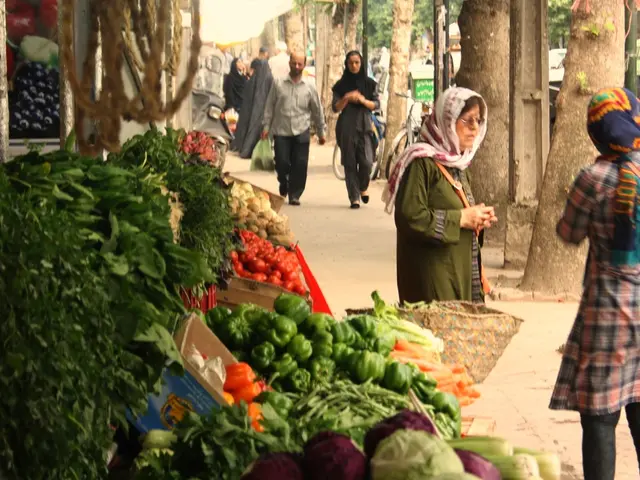Four Important Food Safety Guidelines to Understand!
Hey there! Let's chat about food safety, a topic that's crucial for maintaining good health. We all know the ropes when it comes to the crappy consequences of consuming contaminated grub. So, let's dive headfirst into the basics of food safety principles that keep dirt, germs, and illnesses at bay.
Here's the lowdown on the top food safety principles that keep you safe and healthy:
- Hygiene and Cleanliness
Proper hygiene and cleanliness are the cornerstones of the food safety game. Keeping everything clean isn't just about scrubbing your mitts – it's about getting your whole kitchen environment, equipment, and surfaces clean. This helps zap harmful germs and keeps them from making you sick.
When you're dealing with grub, make sure your hands are clean as a whistle. If you're feeling under the weather, it's best to stay away from the grub to avoid spreading germs to others.
Lather up with a soap-and-water solution, and give your hands the scrub-a-down treatment. Always dry them off with a clean towel. Maintaining a clean kitchen environment reduces the odds of germs invading your munchies.
- Prevent Cross-Contamination
Cross-contamination is another vital aspect of food safety. Cross-contamination prevention is a practice that keeps harmful germs from hopping from one food item to another. This helps minimize the risk of foodborne diseases.
Keep raw materials, eggs, and poultry separate from cooked dishes, fruits, and veggies to avoid contamination. Use different cutting boards for different food types to keep the germs to themselves. A little color coding never hurt nobody; assign different colors to boards for easier differentiation.
Remember to give your raw materials a thorough washing to minimize the possibility of germs taking over your kitchen.
- Safe Cooking
Cooking safety practices are key to eliminating yucky bacteria and ensuring your dishes are safe to chow down on. Making sure your food reaches (and maintains) the ideal internal temperature during the cooking process helps do the trick.
For example, when you're preparing poultry, it should reach an internal temperature of at least 165°F (74°C). Or, when you're cooking ground meats, aim for a temperature of 160°F (71°C). Whip out a food thermometer, steer clear of cross-contamination, and don't forget about good ol' hygiene. Properly cooked food not only tastes better but also protects you from the perils of consuming undercooked or contaminated grub.
- Proper Temperature Control
Proper temperature control is another essential safety principle. Whether it's storage, preparation, or serving, keeping your food consistent and chilly (or warm) is paramount to squashing the growth of harmful bacteria.
Store perishable items at temperatures below 4°C (40°F) to delay bacterial growth. Meanwhile, keep hot food above 60°C (140°F) to keep those baddies at bay. Adhering to these temp guidelines minimizes the risk of foodborne illnesses, safeguarding your healthitoes and uplifting food safety standards.
So there you have it, friends – the key principles for maintaining the integrity of your nosh and keeping yourself fighting fit.Toss these tips into action, both at home and in professional kitchens, to support the well-being of your favorite folks!
Cheers to sanitary kitchens and fabulous food!
[1] World Health Organization. (2021). Food safety. Retrieved from https://www.who.int/foodsafety/areas-work/food-safety-management/food-safety-basics
[2] FoodSafety.gov. (2021). Basics of Food Safety. Retrieved from https://www.foodsafety.gov/keep/basics/food-safety-starts/index.html
[3] FDA. (2020). Retail Food Safety Basics for Food Handlers. Retrieved from https://www.fda.gov/food/food-safety-for-consumers/retail-food-safety-basics-food-handlers
[4] USDA. (2021). Five Keys to Food Safety. Retrieved from https://www.fsis.usda.gov/food-safety/Safe-Handling-Tips/Five-Keys-to-Safe-Food-Handling
Incorporating science and health-and-wellness, understanding the principles of safe cooking helps ensure nutrition in our food-and-drink. For instance, cooking food to the correct temperature, like ensuring poultry reaches 165°F (74°C), destroys harmful bacteria, offering a piece of the health-and-wellness puzzle.
Following proper temperature control while handling and storing food-and-drink contributes to maintaining good health overall, as keeping perishable items below 4°C (40°F) slows bacterial growth.
Incorporating lifestyle choices, such as practicing hygiene and cleanliness and preventing cross-contamination, also plays a significant role in food safety, ensuring that our health-and-wellness goals are consistently met. This includes keeping our kitchens and cooking equipment clean, minimizing cross-contamination of raw and cooked food, and washing raw materials thoroughly.








